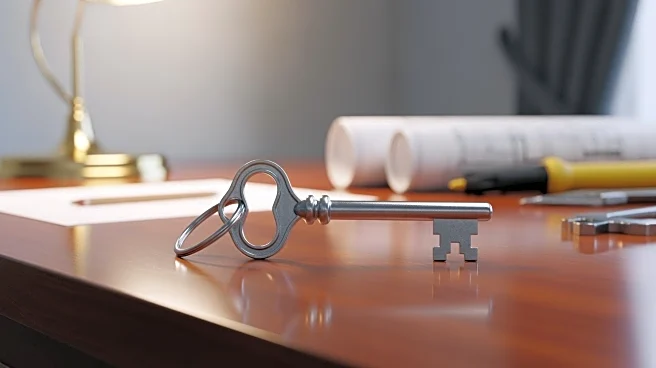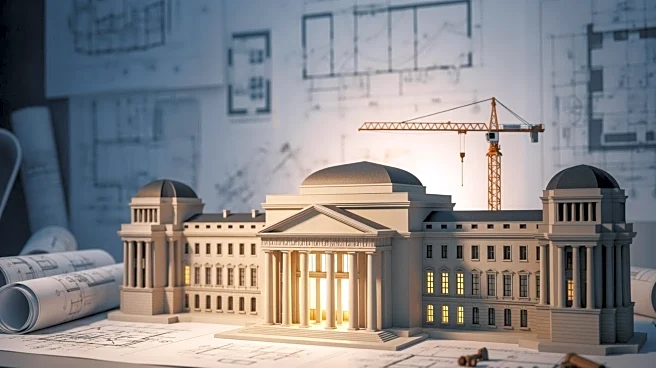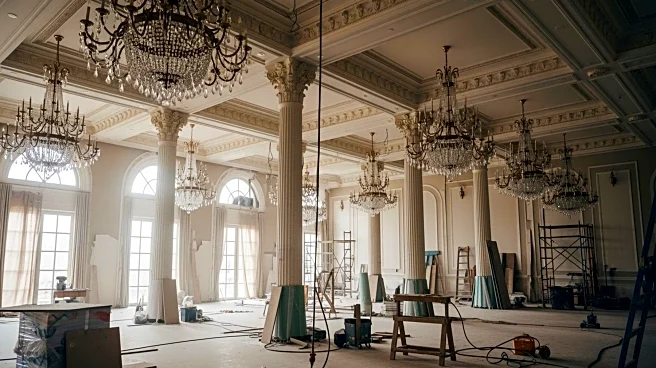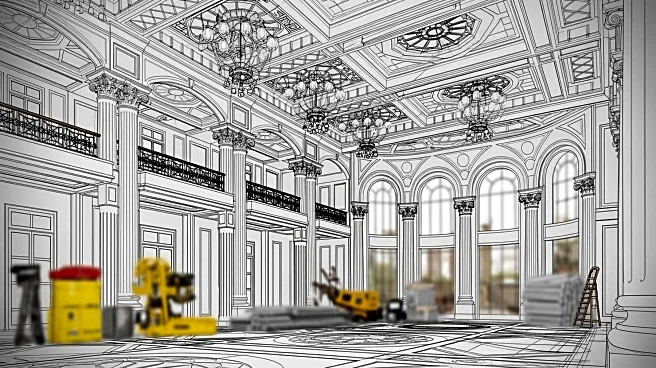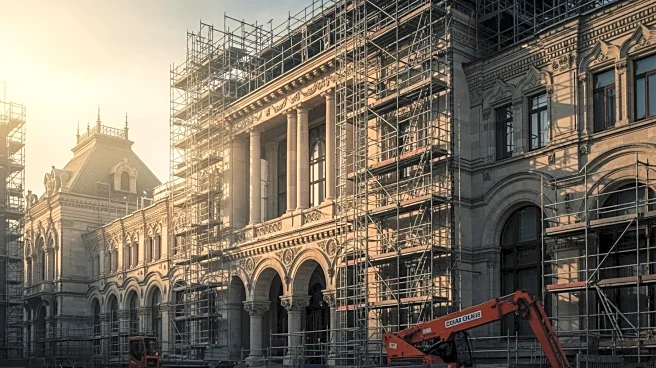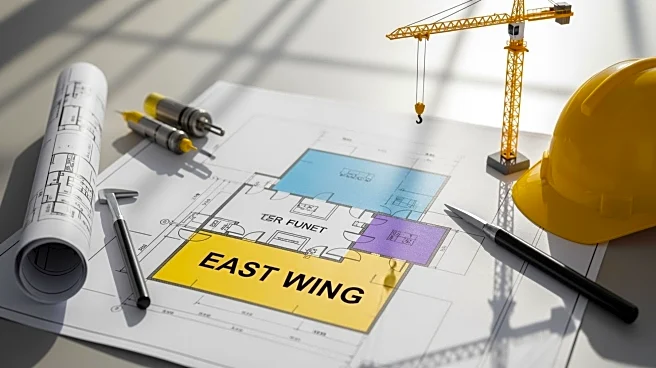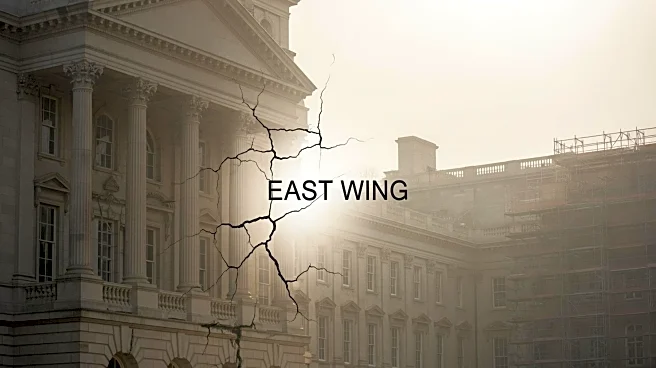What's Happening?
Treasury Secretary Scott Bessent has publicly defended the demolition of the East Wing of the White House, describing President Trump as a 'master builder.' The demolition, which is currently underway,
has been a subject of debate and scrutiny. Bessent, speaking on Meet the Press, emphasized the strategic vision behind the demolition, noting that he has been observing the process from his office at the Treasury building. The decision to tear down the East Wing is part of broader renovations and restructuring efforts at the White House, aimed at modernizing the facilities and enhancing security measures.
Why It's Important?
The demolition of the East Wing is significant as it reflects the administration's approach to infrastructure and modernization within government facilities. This move could set a precedent for future renovations of historical government buildings, balancing preservation with modernization. The decision has implications for historical preservationists and those concerned with maintaining the architectural integrity of iconic structures. Additionally, the project may influence public perception of the administration's priorities, particularly in terms of resource allocation and the emphasis on security enhancements.
What's Next?
As the demolition progresses, stakeholders including historical preservationists and political commentators are likely to continue debating the merits and implications of the project. The administration may face pressure to justify the costs and benefits of the demolition, particularly in light of other pressing national issues. Further developments may include detailed plans for the new construction and potential public or political reactions to the changes at the White House.
Beyond the Headlines
The demolition raises questions about the balance between modernization and preservation of historical sites. It also highlights the administration's focus on security and infrastructure, potentially influencing future policies regarding government buildings. The project may spark discussions on the cultural significance of the White House and how changes to its structure could impact its historical legacy.
